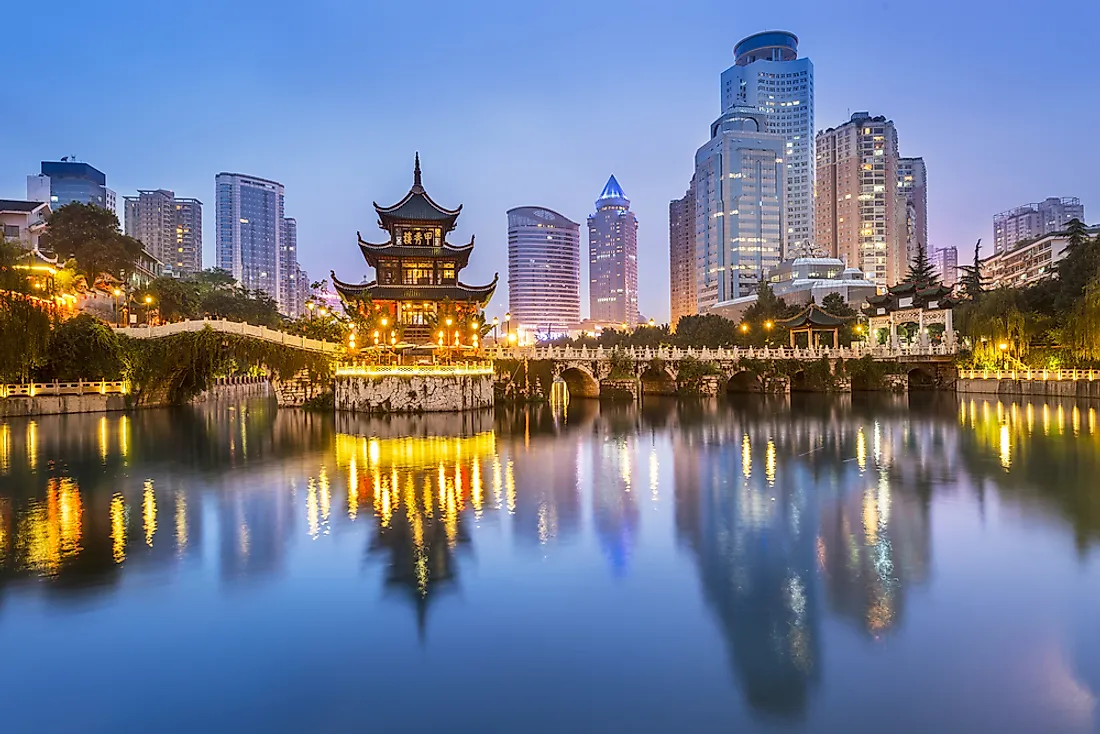What is the Capital of Guizhou Province?

The mountainous Chinese province of Guizhou is located in the southwestern part of the country, on the eastern end of the Yungui Plateau. Guizhou encompasses an area of 176,16 km2, making it China's 16th most extensive province, and its population of 34,746,468 ranks as the 19th most populous. With an elevation of 2,900 m, Jiucaiping is the highest point in the province. Guizhou is less developed and poorer relative to most provinces in China, but is rich in natural and environmental resources, as well as being one of the most diverse.
Capital of Guizhou
Guiyang is the capital of Guizhou Province. The city is located near the center of the province, on the north bank of the Nanming River. Guiyang is situated at an elevation of approximately 1,100 m and occupies an area of 8,034 km2. The city experiences a humid subtropical climate.
Demographics of Guiyang
Guiyang has an estimated population of 4,696,800 and a population density of 580 persons per square km. The Han people are Guiyang's largest population group, which also includes 23 different minority groups, the largest of which is the Miao people. A variety of Southwestern Mandarin is spoken by most of Guiyang’s population.
Economy of Guiyang
In addition to serving as the political capital, Guiyang is also the commercial and economic hub of Guizhou, with a gross domestic product (GDP) per capita of US $10,720 in 2017. Several national and international retail companies operate in the city, as well as wholesale commercial operations. Guiyang features many large shopping centers and popular foreign food chains. Over 70% of the city’s electricity comes from hydroelectric power. Guiyang also has a well established pharmaceuticals industry that produces both traditional Chinese and Western medicines.
History of Guiyang
The area that is now modern Guiyang was inhabited as far back as the 7th century, serving as a military outpost under the Sui and Tang dynasties. During the rule of the Yuan dynasty, Guiyang was known as Shunyuan. In 1413, the province of Guizhou was created and Guiyang was designated as its capital, but was given the same name as the province. The city was later upgraded to the status of a prefectural seat during the rule of the Ming dynasty. Guiyang experienced a rapid phase of development during and after the Second World War that transformed the city into a modern metropolis.
Tourism in Guiyang
Guiyang features numerous places of historical and cultural interest, such as Qingyan Ancient Town, Xifeng Concentration Camp, and the Confucian Center. It also contains natural attractions like the Xifeng Hot Spring and Huaxi National Wetland Park. Additionally, Guiyang is known for its spicy food, especially huangba (a sweet wrap made from rice), Gaoba porridge (a sweet dish), and siwawa (a vegetarian dish). The city is home to many pubs and nightclubs, night markets, and night gaming traditions.











